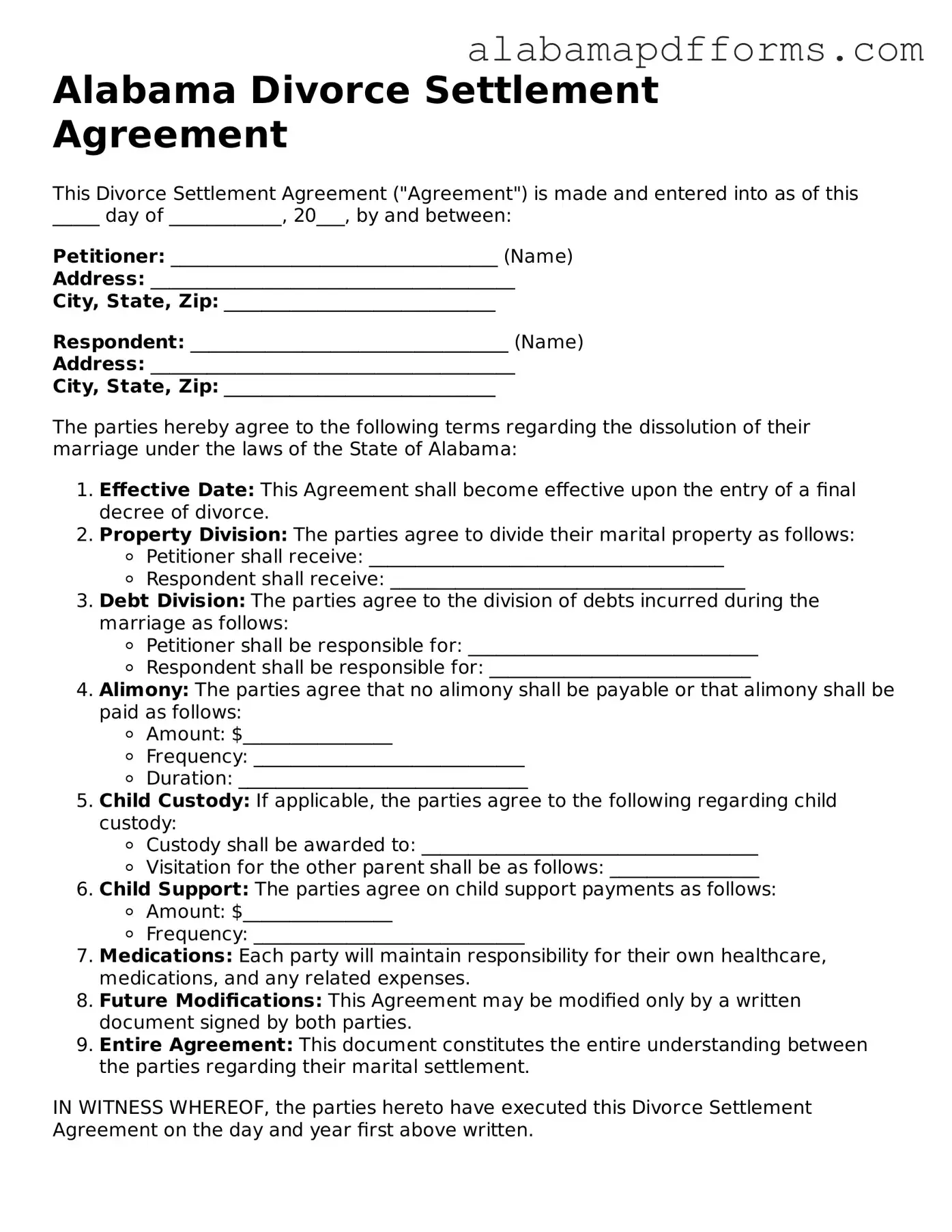Alabama Divorce Settlement Agreement
This Divorce Settlement Agreement ("Agreement") is made and entered into as of this _____ day of ____________, 20___, by and between:
Petitioner: ___________________________________ (Name)
Address: _______________________________________
City, State, Zip: _____________________________
Respondent: __________________________________ (Name)
Address: _______________________________________
City, State, Zip: _____________________________
The parties hereby agree to the following terms regarding the dissolution of their marriage under the laws of the State of Alabama:
- Effective Date: This Agreement shall become effective upon the entry of a final decree of divorce.
- Property Division: The parties agree to divide their marital property as follows:
- Petitioner shall receive: ______________________________________
- Respondent shall receive: ______________________________________
- Debt Division: The parties agree to the division of debts incurred during the marriage as follows:
- Petitioner shall be responsible for: _______________________________
- Respondent shall be responsible for: ____________________________
- Alimony: The parties agree that no alimony shall be payable or that alimony shall be paid as follows:
- Amount: $________________
- Frequency: _____________________________
- Duration: _______________________________
- Child Custody: If applicable, the parties agree to the following regarding child custody:
- Custody shall be awarded to: ____________________________________
- Visitation for the other parent shall be as follows: ________________
- Child Support: The parties agree on child support payments as follows:
- Amount: $________________
- Frequency: _____________________________
- Medications: Each party will maintain responsibility for their own healthcare, medications, and any related expenses.
- Future Modifications: This Agreement may be modified only by a written document signed by both parties.
- Entire Agreement: This document constitutes the entire understanding between the parties regarding their marital settlement.
IN WITNESS WHEREOF, the parties hereto have executed this Divorce Settlement Agreement on the day and year first above written.
_____________________________
Petitioner
_____________________________
Respondent
Witness: _________________________________
Date: ___/___/____
